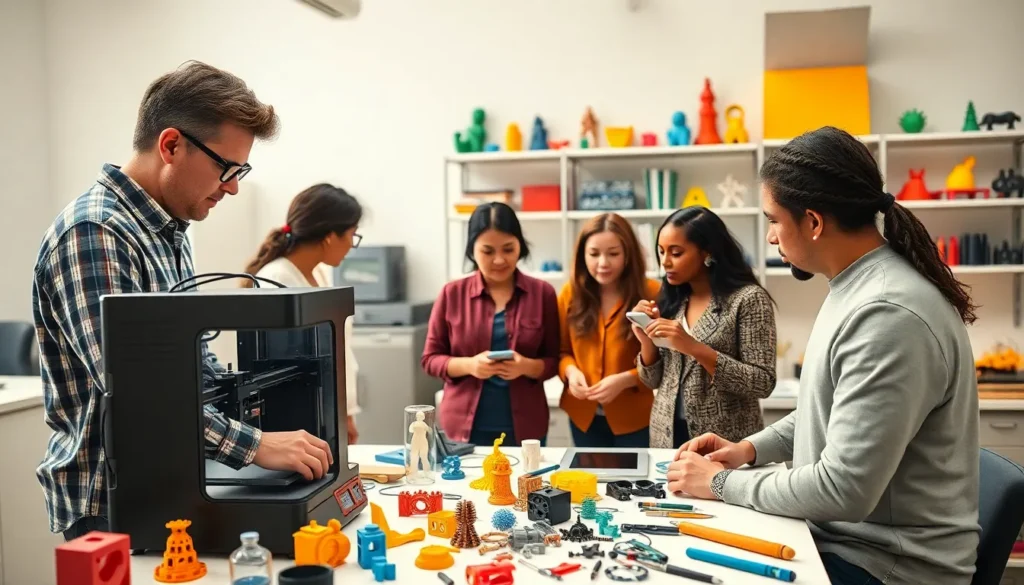Table of Contents
ToggleIn a world where creativity meets technology, the D printing community stands at the forefront of innovation. Imagine a place where ideas take shape layer by layer, turning dreams into tangible objects faster than you can say “extruder.” This vibrant community is more than just a bunch of tech enthusiasts; it’s a melting pot of inventors, hobbyists, and problem solvers, all united by a passion for 3D printing.
Overview of D Printing Community
The 3D printing community thrives on innovation and collaboration. It includes enthusiasts, engineers, and educators who share insights and advancements regularly. Online forums and social media platforms serve as key hubs for exchanging knowledge and experiences. Various groups focus on specific aspects, such as design, materials, and technology.
Numerous events, including Maker Faires and industry conferences, provide opportunities for networking. Participants showcase their projects and exchange ideas, strengthening the community’s bonds. Tutorials and resources abound, helping newcomers navigate the complexities of 3D printing.
Organizations often create open-source projects that encourage collaboration and creativity. Some of the most successful innovations originate from these collaborative efforts. Educational programs leverage 3D printing to teach concepts in science, technology, engineering, and mathematics (STEM).
Community-driven initiatives emphasize sustainability, with members exploring eco-friendly materials and processes. This commitment to environmental responsibility reflects a growing awareness of global issues. Overall, the 3D printing community is a vibrant space where creativity meets technology, fostering a culture of continuous learning and exploration.
History and Evolution


The history of the 3D printing community showcases its remarkable journey from conceptual beginnings to a thriving ecosystem. This evolution reflects advancements in technology, materials, and community engagement.
Early Days of D Printing
The origins of 3D printing trace back to the 1980s, when Charles Hull introduced stereolithography. Hull’s invention allowed for the printing of three-dimensional objects, sparking interest among engineers and designers. The technology initially remained confined to industrial applications. In the 1990s, the introduction of Fused Deposition Modeling expanded possibilities, making it easier for hobbyists to enter the field. During this time, the development of affordable desktop printers began to emerge, setting the stage for a growing movement among creators and innovators.
Key Milestones
Several milestones marked the evolution of the 3D printing community. In 2009, the establishment of the RepRap project encouraged open-source collaboration among enthusiasts, aiming to create self-replicating 3D printers. This project significantly impacted the accessibility of 3D printing technology. By 2012, the arrival of the first consumer-oriented 3D printers heralded a new era, fostering widespread adoption. Maker Faires began showcasing innovations in 2013, highlighting community creativity and collaboration. With further advancements, industries like healthcare and aerospace embraced 3D printing, demonstrating its versatility and potential.
Current Landscape of D Printing Community
The 3D printing community continues to thrive, driven by innovation and collaboration among its members. This dynamic space encompasses various platforms, forums, and influential figures that shape its landscape.
Popular Platforms and Forums
Various online platforms facilitate discussions and knowledge sharing. Reddit features subreddits like r/3Dprinting, where users share experiences, projects, and troubleshooting tips. Thingiverse serves as a repository for downloadable designs, fostering collaboration on creative projects. Additionally, Facebook groups connect enthusiasts, offering a space for dialogue about techniques and innovations. Forums like 3DPrintBoard provide dedicated areas for specific topics, including slicer software and printer upgrades. Other platforms include YouTube, where creators showcase their builds, projects, and tutorials, enhancing practical understanding of 3D printing.
Influential Figures and Organizations
Several key figures and organizations play an essential role in the 3D printing community. Bre Pettis, co-founder of MakerBot, significantly influenced accessibility in 3D printing with user-friendly machines. Organizations like the RepRap project promote open-source principles, encouraging collaborative advancements. Notable influencers include the educators who integrate 3D printing into STEM curricula, fostering the next generation of innovators. Community leaders often organize workshops and hackathons, further driving engagement and knowledge distribution. Large companies like Ultimaker and Prusa Research contribute to industry standards and support, while nonprofit organizations advocate for sustainable practices within the community.
Challenges Facing the D Printing Community
The 3D printing community encounters various challenges that impact its growth and innovation. Addressing these obstacles is crucial for maintaining momentum and expanding capabilities.
Technical Limitations
Technical limitations pose significant hurdles in the 3D printing landscape. Print resolution can vary greatly among different machines, affecting the quality of the final product. Material compatibility is another concern, as not all printers support every filament type. Additionally, speed and scalability play roles in production efficiency, impacting user experience. A lack of standardized practices creates inconsistencies, complicating project execution for both hobbyists and professionals. Quality control deficits may lead to failed prints, wasting materials and time. Lastly, the need for continuous development in software also hampers optimal performance.
Regulatory Issues
Regulatory issues present additional barriers for the 3D printing sector. Intellectual property concerns arise, complicating the sharing and replication of designs. Different countries enforce varying regulations that can lead to confusion for international collaborations. Safety standards often lag behind technological advancements, posing risks for end users. Moreover, compliance with environmental regulations becomes increasingly important as the community explores sustainable practices. The challenge of navigating complex regulatory environments can slow innovation and adoption. Engaging policymakers effectively remains crucial to fostering a supportive ecosystem for 3D printing advancements.
Future Trends in D Printing Community
The 3D printing community is poised for significant advancements. Future trends indicate an increase in collaborative projects that emphasize innovation and accessibility.
Innovations on the Horizon
Innovative materials such as bio-based plastics and composites are gaining traction within the community. Increased focus on multi-material printing enables the creation of complex designs with varied properties. Developments in hardware are also on the rise, with upgrades delivering better print quality and speed. Companies are actively pursuing advancements in print software, enhancing user experience with more intuitive interfaces. Significant research into automation aims to streamline workflows, optimizing production capabilities for manufacturers. Sustainability remains a top priority, driving efforts to incorporate recycled or eco-friendly materials into printing processes.
Growing User Engagement
User engagement within the 3D printing community is steadily increasing. Online platforms are witnessing growth, allowing enthusiasts to share projects, tutorials, and resources easily. Increased participation in webinars and virtual events fosters knowledge sharing among newcomers and seasoned experts. Members frequently collaborate on projects, enhancing creativity and community spirit. Social media is evolving into a vital tool for connecting users and showcasing innovative designs. Local maker spaces are becoming hubs for experimentation, encouraging hands-on experiences and mentorship opportunities. The hunger for education fuels initiatives that integrate 3D printing into more STEM curricula across schools and universities.
The 3D printing community stands as a testament to the power of collaboration and innovation. With its diverse members constantly pushing boundaries, this vibrant space fosters creativity and technological advancement. As challenges arise, the community’s resilience shines through, with a commitment to sustainability and education driving future growth.
Looking ahead, the potential for breakthroughs in materials and processes is immense. By continuing to share knowledge and resources, the community can navigate obstacles while paving the way for the next generation of makers and innovators. The journey of 3D printing is far from over, and its impact on industries and education will only deepen as the community evolves.







